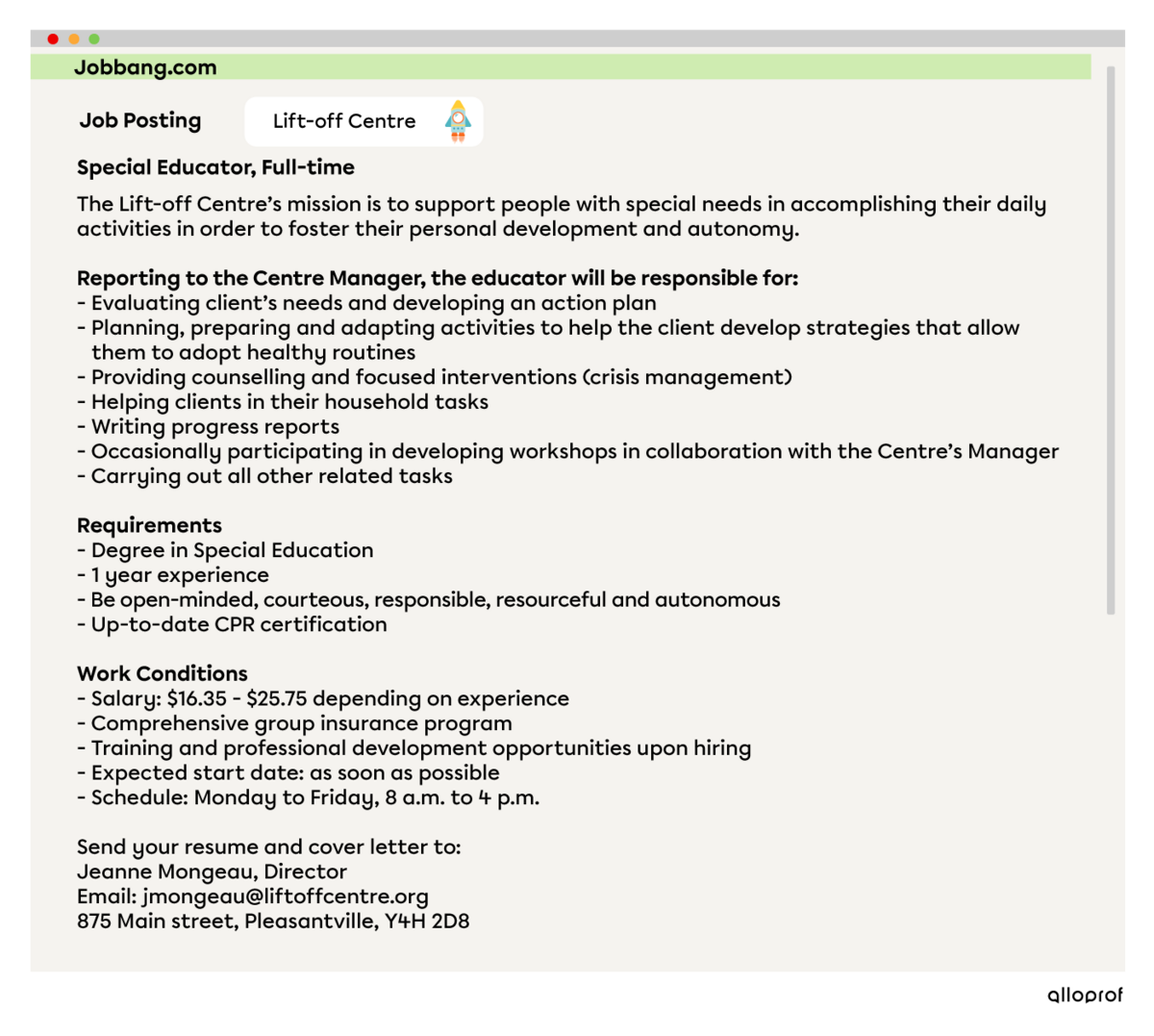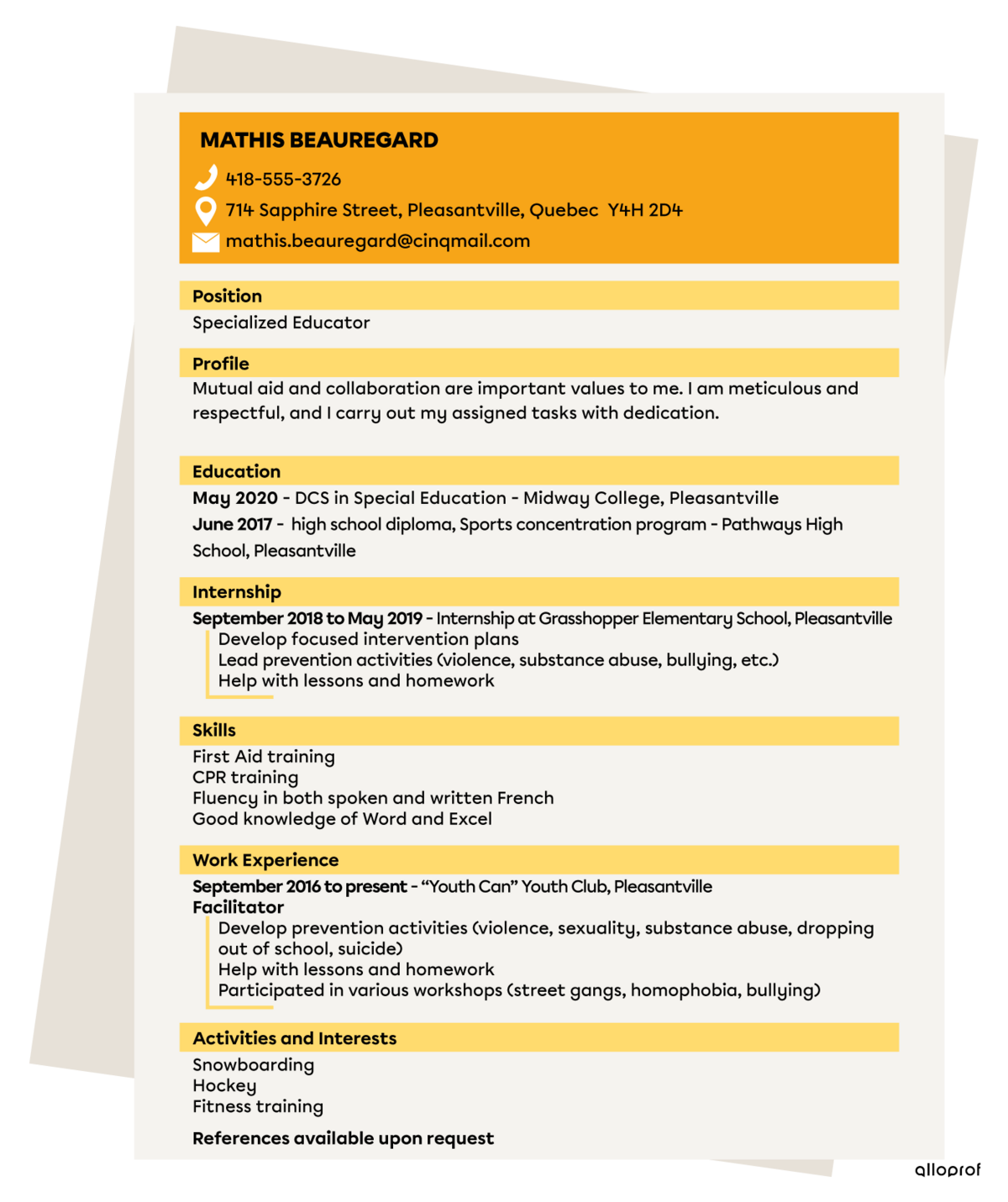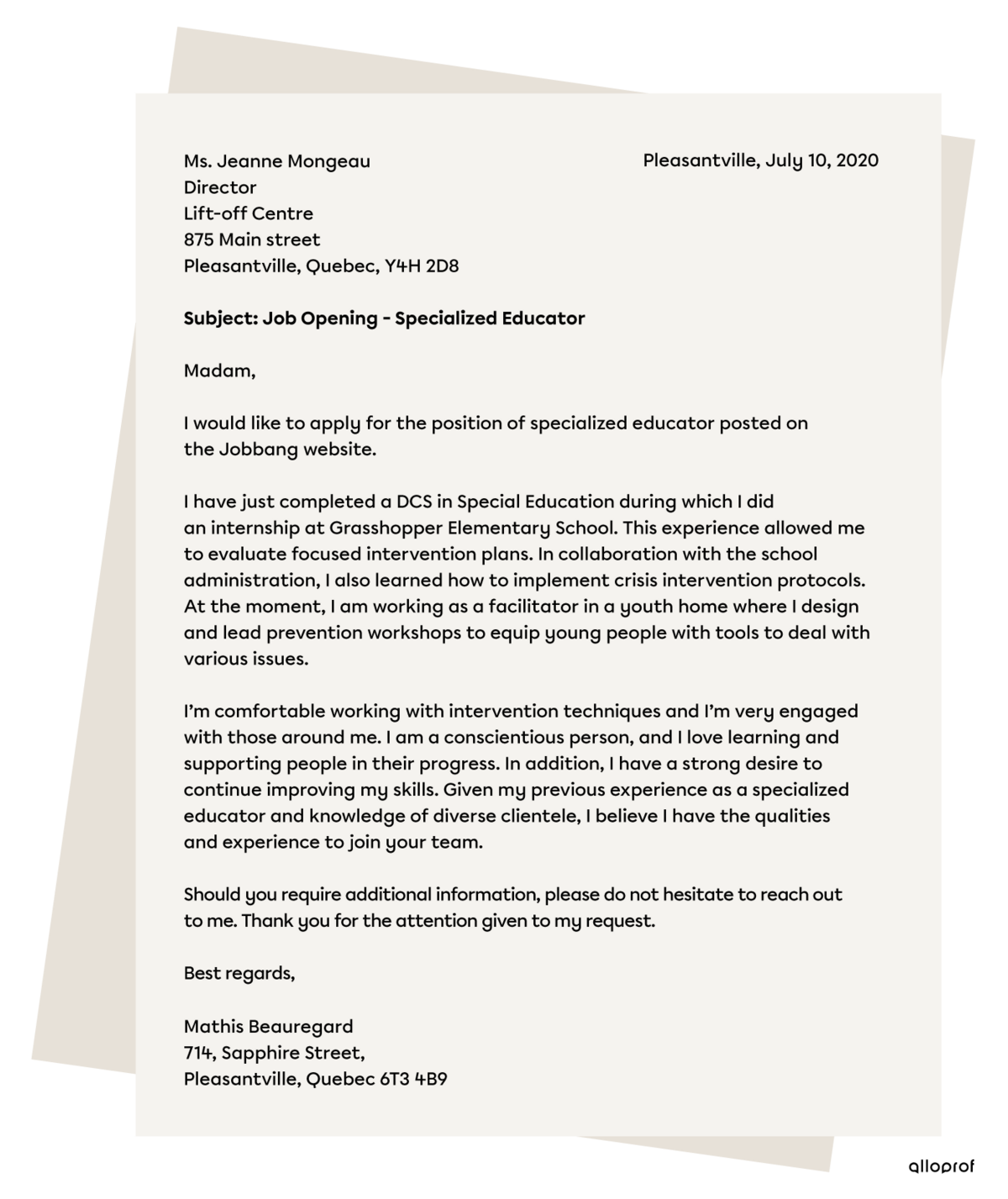After applying all the right job search strategies, you are finally ready to send your application to potential employers. As you browse through the job postings related to your field of study, one catches your eye: special education.
The job posting lists the employer’s requirements, including the education, certification, experience and skills necessary for you to perform the tasks of the available position.

This is what a job posting might look like.
A certification is proof that a person has completed a course such as a first aid, CPR or babysitting course.
It also provides information on:
- The pay offered ($16.37 to $25.75)
- Fringe benefits (group insurance)
- Career growth opportunities (courses and training that may lead to a more senior position)
- The schedule (Monday to Friday, 8 a.m. to 4 p.m.)
- Expected start date (as soon as possible)
- Group insurance groups multiple individuals under the same contract to obtain coverage from an insurance company at a better price. This coverage can include dental, health and vision care, prescription drugs, and more.
- Fringe benefits are a form of compensation offered to some employees in addition to their wages, such as group insurance, paid holidays, paid leave, a pension plan, etc.
You know who to send your resume and cover letter to (Jeanne Mongeau). The contact information of the Centre’s Director (875, Main street, Pleasantville, Y4H 2D8) must be included in your cover letter.
You need to write your resume first.
A resume is a document that gives prospective employers an overview of your educational and professional background, along with your skills and abilities. Looking at the previous job posting, you see that your background matches the job requirements, because you have more than two years of experience working in a youth centre. Let’s see how you can organize this information on your resume.
Do not include any confidential or personal information on your resume, especially things like your social insurance number, date of birth, weight, nationality, and don’t include a photo. Focus only on what makes you stand out as a candidate: your qualities as a future employee.
Here are some other relevant resources for writing your resume:

This is what your resume might look like.
After you finish your resume, you start thinking about how to write a cover letter that will grab the interest of your prospective employer. You have to be careful about the quality of the language in your letter: no spelling or grammar mistakes allowed! A cover letter that contains mistakes gives a bad first impression to the employer and may prevent you from getting a job interview.
Read the job posting again so you can really focus on the requirements of the position. Your letter should showcase the fact that you have all the necessary skills to do the job well. Generally, a good cover letter should include:
-
The name of the person responsible for hiring, their position and the name and address of the company
-
The date, at the top right-hand corner
-
The position you are applying for
-
A brief description of your education and professional experience
-
A summary of your skills and abilities related to those mentioned in the job posting
-
A thank-you
-
A sign-off

This is what your cover letter might look like.
Once you have written your resume and cover letter, you can hand-deliver them to the prospective employer, who may notice that you made an effort to come and meet in person. It will give you an opportunity to make initial contact and demonstrate your interest in the position.
If you choose to send your resume and cover letter by email, make sure to use a neutral email address. Employers are sensitive to how you present yourself: use a professional-looking email address (first and last names) and be careful about what you post on social media.
Great news: you just got called for an interview! Before you go, here are some tips for improving your chances of success:
- A few days before the interview, take some time to learn about the company, its mission and its values
- Dress neatly
- Be polite
- Make eye contact with the employer
- Take the time to listen to what the employer has to say before answering
- During the interview, focus on your relevant work experience, not on your personal life
- If the employer asks you about your former or current employer, remember to be respectful of them—use positive phrasing and “I” as much as possible

For more tips on how to prepare for interviews, have a look at the following links: